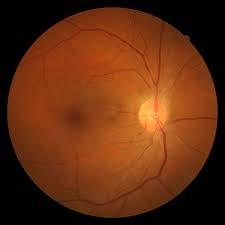- Home
- Editorial
- News
- Practice Guidelines
- Anesthesiology Guidelines
- Cancer Guidelines
- Cardiac Sciences Guidelines
- Critical Care Guidelines
- Dentistry Guidelines
- Dermatology Guidelines
- Diabetes and Endo Guidelines
- Diagnostics Guidelines
- ENT Guidelines
- Featured Practice Guidelines
- Gastroenterology Guidelines
- Geriatrics Guidelines
- Medicine Guidelines
- Nephrology Guidelines
- Neurosciences Guidelines
- Obs and Gynae Guidelines
- Ophthalmology Guidelines
- Orthopaedics Guidelines
- Paediatrics Guidelines
- Psychiatry Guidelines
- Pulmonology Guidelines
- Radiology Guidelines
- Surgery Guidelines
- Urology Guidelines
Cell therapy leads to improvement in visual acuity in retinitis pigmentosa

Cell therapy company jCyte has announced results from a phase 1/2a clinical trial for its investigational product, jCell, in retinitis pigmentosa (RP). Presented by David S. Boyer, MD, at the annual Ophthalmology Innovation Summit in November, the 12-month study showed a favorable safety profile and indications of potential benefit. jCell has been granted both Orphan Drug and Regenerative Medicine Advanced Therapy (RMAT) designation by the FDA.
“In this initial, open label study, there were trends in improvement in best corrected visual acuity (BCVA) in the treated eyes compared to untreated eyes,” said jCyte co-founder Henry Klassen, MD, PhD. “The best results were observed in the highest dose group.”
RP is a genetic condition that progressively destroys the rod and cone photoreceptors in the retina. It often strikes people in their teens, with many patients rendered legally blind by middle age. Worldwide, an estimated 1.5 million people suffer from the disease, making it the leading cause of heritable blindness.
In this treatment, retinal progenitor cells are injected into the vitreous cavity of the eye under topical anesthesia. The hope is to rescue and reactivate diseased photoreceptors before they die.
“Our initial goal was to find a way to slow the rate of visual loss, so it is gratifying to see possible improvement,” said Klassen. “We have been encouraged by the FDA to explore higher doses.”
To evaluate changes in visual acuity, the study assessed mean difference in BCVA change between treated and untreated eyes at specified time points throughout the study. In the lowest dose group (500,000 cells) the mean difference was 1 letter at 12 months after treatment, while at the highest dose (3 million cells), the mean difference was 9 letters.
The phase 1/2a study included 28 subjects. Observed side effects were generally minor, transitory, and consistent with an intraocular injection. There were no grade 4 events associated with the treatment.
Patient feedback was particularly encouraging. Many reported improved vision, including increased sensitivity to light, improved color discrimination and reading ability and better mobility. In addition, 22 of the 28 patients have been treated in their other eye as part of a follow-on extension study.
“We are very encouraged by these results,” said jCyte CEO, Paul Bresge. “Currently, there are no effective therapies to offer patients with RP. We are moving forward as quickly as possible to remedy that.”
The company has launched a larger phase 2b masked, controlled study to assess jCell’s efficacy. Supported by the California Institute for Regenerative Medicine (CIRM), the randomized trial is recruiting up to 85 patients with BCVA no better than 20/80 and no worse than 20/800 in their study eye. Participants will receive a single jCell injection or sham control. Efficacy will be assessed by testing BCVA, visual fields, contrast sensitivity, quality of life measures and participants’ ability to navigate a maze.
“The feedback we’ve received from trial participants has been remarkable,” said Bresge. “We look forward to moving through the regulatory process and bringing this easily-administered potential therapy to patients worldwide.”

Disclaimer: This site is primarily intended for healthcare professionals. Any content/information on this website does not replace the advice of medical and/or health professionals and should not be construed as medical/diagnostic advice/endorsement or prescription. Use of this site is subject to our terms of use, privacy policy, advertisement policy. © 2020 Minerva Medical Treatment Pvt Ltd